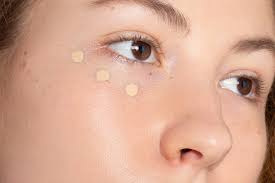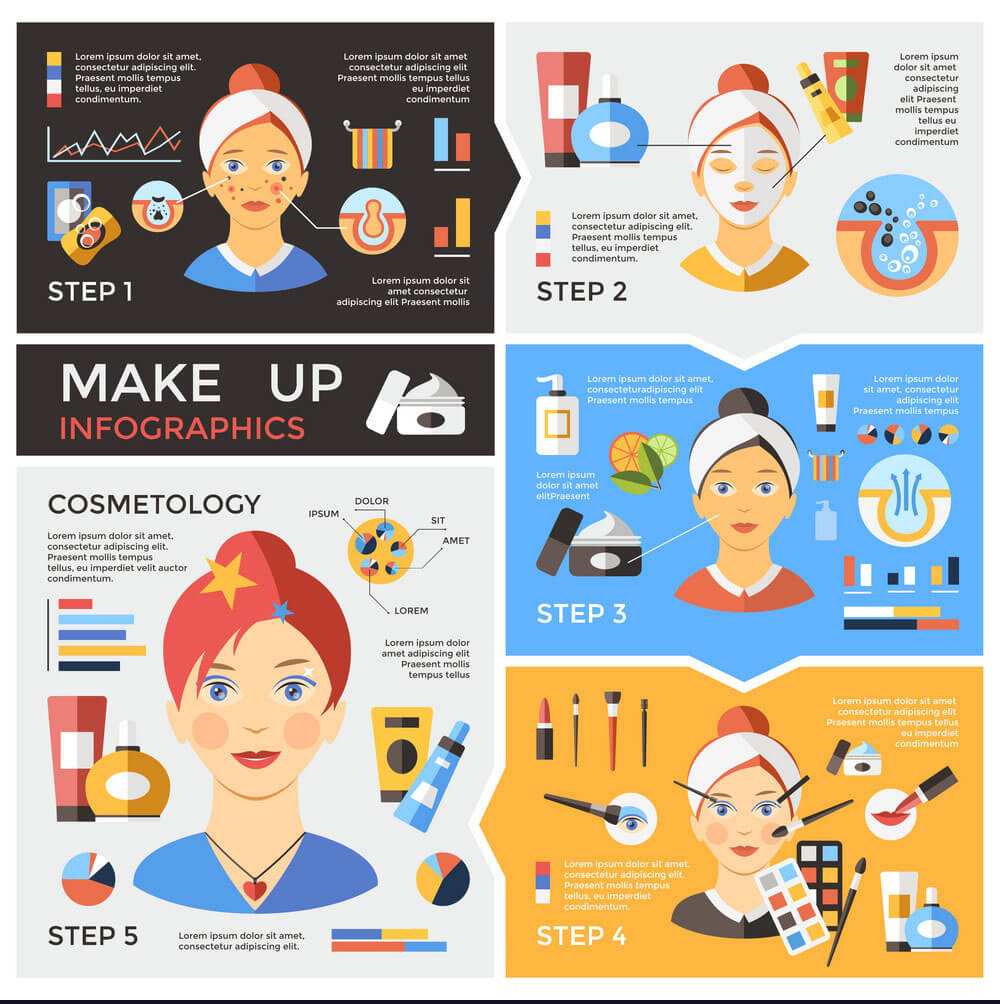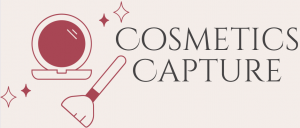Makeup is an excellent ally when you need to disguise a pimple. Instead of applying a higher quantity of foundation than usual, it is better to intervene only on the precise point with the most suitable products. A thick layer of cosmetics could further irritate the skin, while proper hygiene and oily-free products can help you hide acne without the risk of clogging your pores.
 Choosing the right cosmetics
Choosing the right cosmetics
Choose cosmetics without oily substances. The products that guarantee not to occlude the skin pores are called non-comedogenic or, sometimes, anti-comedogenic. The first ingredient in your cosmetics should always be water. In particular, the minerals are natural cosmetics and, in addition to absorbing excess sebum, they are able to mask red pimples without irritating the skin.
- Non-comedogenic cosmetics do not interfere with acne medications.
Choose a primer suitable for your skin type. It must be free from oily substances and guarantee long-lasting makeup. It’s not easy to get concealer to last on an inflamed pimple, but a good primer can make a noticeable difference. The light primers, which are quickly absorbed, hardly irritate the skin and are also suitable for those with oily skin.
- Use a primer with sun protection factor (SPF) to protect your skin from the sun, especially if you have scars or hyperpigmentation (dark spots). Exposure to sunlight can slow down the healing process.
- Apply the primer all over your face to make your makeup look even and last longer.
Use a powder foundation. The mineral ones have the advantage of not occluding the pores, but offer less coverage than liquid formulas. Opt for a mattifying product, ideal for oily skin that tends to become shiny; in addition to absorbing excess sebum, it will better camouflage pimples.
- Avoid products with a pearly finish, which reflects light, so as not to unnecessarily attract attention to the pimple.
- Foundations formulated to last a long time, unfortunately, tend to clog pores, causing acne to worsen.
- If you want light coverage, an oil-free tinted moisturizer can work perfectly on acne-prone skin. It will also not clog pores!
Find or create a concealer that matches your skin color. A product that is too light or too dark would risk highlighting skin imperfections instead of masking them. Blend two different color concealers if you can’t find one that suits your skin tone. Keep in mind that oily skin can oxidize the concealer, making it darker. You can avoid this by choosing a concealer that is half a shade lighter than your skin color
Determine if you need to set your makeup with powder. If you have skin that tends to shine, the powder helps you absorb excess sebum; conversely, if you have dry skin, it could dehydrate it even more. Even in the first case, it is better to choose a super light powder, which does not risk trapping the sebum inside the pores.
Also Read: Best Face Sunscreen For Sensitive Skin
 Apply Makeup
Apply Makeup
First, clean and moisturize your skin. Before you start applying makeup, it is important to cleanse your skin with warm water. Apply a light, fragrance-free moisturizer. If it doesn’t have SPF, use sunscreen to protect yourself from the sun’s harmful rays.
- Sunscreens do not cause acne unless they contain harmful chemicals, such as para-aminobenzoic acid (also known by the acronym PABA) or benzophenone.
Prepare the sponges or brushes. If you want to avoid touching the skin with your hands, you can apply the cosmetics using the type of applicator you prefer. However, remember that not only your hands, but also sponges and brushes, can transfer bacteria that are one of the possible causes of acne to your skin, so wash them at least twice a week.
Apply the primer. Wait a few minutes for your skin to absorb the moisturizer, then apply the primer using your fingers or a special sponge. If you don’t want to use it all over your face, you can pat it exclusively on problem areas to ensure longer life of the concealer.
Also Read: How To Remove False Eyelash Glue
Apply the concealer. Wait a few minutes to give the primer time to set, then apply the concealer to the pimple in an “X”. Now pat it gently with your hands to distribute it evenly. Remember that the concealer should always be tapped and not “pulled” so as not to pull the underlying skin.
- If you prefer, you can apply foundation first, especially if there aren’t many imperfections to cover. If necessary, you can use the concealer later to refine the result.
- If you have particularly red skin, it may be best to use a green concealer. Of course, you’ll need to cover it with foundation or a beige concealer.
Apply foundation. Wait a few seconds, so that the concealer has time to set on the skin, then apply the foundation with a brush. Try to use as little as possible. If it doesn’t feel opaque enough, add more, a little at a time, distributing it evenly, until you have achieved the desired result.
- If the pimple is still partially visible, wait a few minutes for the foundation to have time to set, then add some concealer.
- If you want, at this point, you can fix the make-up and further even out the complexion with a light powder. Apply it with a medium-sized brush, making slow circular movements.
- When the foundation is completely dry, you can apply the rest of the makeup.
Also Read: How To Cover Bruises With Makeup
How to Cover a Pimple With Makeup | Infographics

How to Cover a Pimple FLAWLESSLY | Video Explanation
Warnings
- If your skin becomes swollen, itchy, or red after applying makeup, wash it off immediately. Some cosmetics contain allergenic substances that can cause contact dermatitis.
Advice
- Mineral cosmetics contain beneficial ingredients that can have positive effects on the skin. Substances such as silica, titanium dioxide, and zinc oxide absorb skin oils and mask redness without irritating it. Dimethicone also helps mask skin redness.
 Cosmetics Capture is an online shop where you can find the best and certified Makeup, Beauty and Personal Care products For all genders.
Cosmetics Capture is an online shop where you can find the best and certified Makeup, Beauty and Personal Care products For all genders.